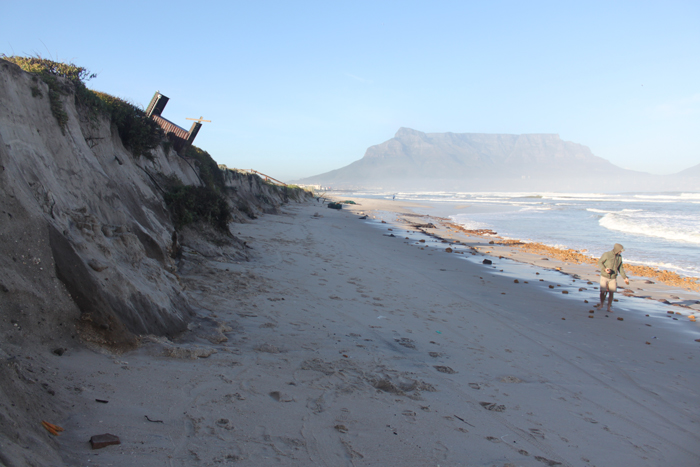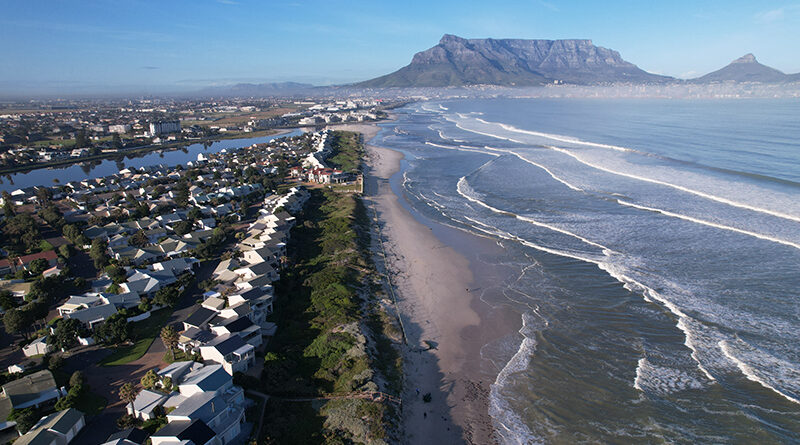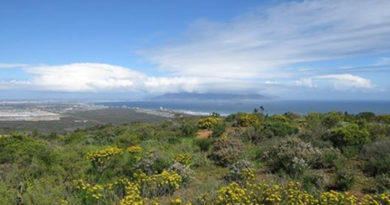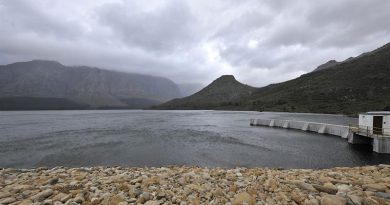Find out why Lagoon beach, Sunset beach and Milnerton beaches are receding
Significant coastal cusps have formed along the coastline between Lagoon Beach and Sunset Beach, resulting in large drops in the beach level in the area of these cusps and the resulting erosion of the adjacent dunes. This is a natural coastal process that is taking place in an already receding coastline, which has resulted in visually dramatic changes to the shoreline. These effects of general erosion and coastal processes are typically stronger and more pronounced during the stormy winter season in Cape Town.
The sandy beaches along Cape Town’s Atlantic coastline, from Lagoon beach to Sunset beach including Milnerton, are known to be receding or eroding slowly overtime. Changes in sediment transport processes and sediment supply to the coastal system that have resulted from urban development contribute to this effect. This sediment transport process, which is essentially beach sand loss in winter and replenishment of sand during summer, has been interrupted by urban development, reducing the summer sand replenishment of beaches, resulting in a net loss over time and therefore coastal erosion.
More recently, the sand level at isolated points along the Milnerton and Sunset beaches, where cusps are currently located, have also dropped more severely. This dropped beach levels by approximately 1,5m, which has resulted in the undermining of the bottom (toe) of the dunes at these locations, leading to slumping of dune faces and unstable slopes of up to three to four metres high.
The process of general coastal erosion and sediment transport is caused by breaking waves, which suspend sand from the seabed, beaches and the bottom of dunes as fierce turbulence wash over the sandy surfaces.
Once suspended, the currents caused by the wind and waves and larger circulations move the sand off the beach, making beaches steeper, thinner and narrower in places. These currents then move the sand, which is now suspended in the water, and deposits and builds offshore, underwater sandbanks also moving the sediment downdrift along the shoreline.
The recent large focused beach and dune erosion comes after consecutive erosion events on top of the general coastal erosion and generally lower winter beach levels, caused by very high spring tides on around 1 September, followed by consistently large waves the following week and a storm event on 11 September. Furthermore, at certain locations along the beach in front of Woodbridge Island Estate and the Milnerton Golf Club, beach cusps were present on the coastline at the same time. The location of the beach cusps at these locations, coinciding with the conditions we have mentioned resulted in focused, localised loss of sand and has led to the undermining of dunes and structural damage.

‘A similar erosion event was recorded in July 2018, which also caused similar large focused beach erosion and structural damage at the Milnerton Surf Life Saver Club, the Milnerton Golf Club and Restaurant as well as other localised locations along the coast. In between these winter storm events, the beach will slowly recover and new cusps could form. This is a natural and normal coastal process. This normal process is happening in addition to slow erosion, and with it meeting fixed infrastructure results in the dramatic pictures we are seeing along parts of this coastline,’ said the City’s Deputy Mayor and Mayoral Committee Member for Spatial Planning and Environment, Alderman Eddie Andrews.
In some locations, the low beach levels also exposed an underlying geological layer or old shell and pebble layers, which should not be disturbed. The dark soft brown and red rock layers seen exposed are examples of this and should not be confused for oil spills or dumped material. The presence of the rock layer helps to limit beach erosion to some extent.
‘The effect of future sea level rise will contribute to this effect and presents a long-term challenge along this stretch of shoreline. The City is monitoring the process and its effects on these beaches. We expect to see a slow recovery of beaches and with a slow net loss of dune width over time. The coastal process driving these changes are of a large scale and influenced by multiple factors. This demonstrates the importance of wide coastal buffers as the best defence to coastal dynamics,’ said Alderman Eddie Andrews.
Published by: City of Cape Town, Media Office




